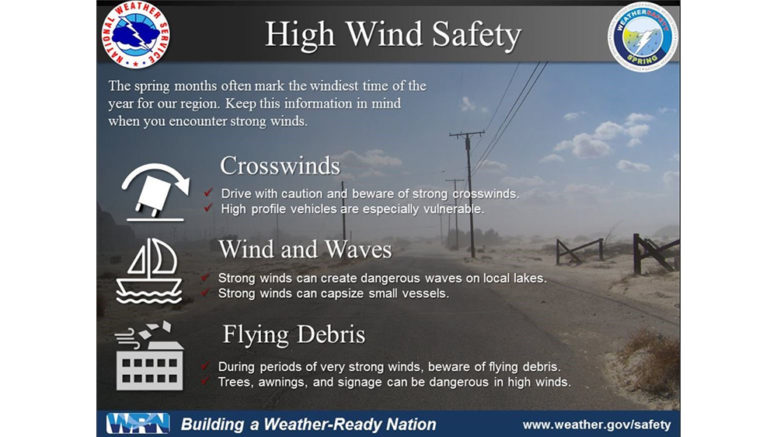Staying Safe During Fast-Moving Storms With High Winds

Table of Contents
Before the Storm: Preparation is Key
Proactive measures are vital when facing the potential danger of fast-moving storms and high winds. Thorough preparation significantly increases your chances of weathering the storm safely. This involves creating a comprehensive plan, securing your home, and staying informed about approaching weather conditions.
Creating a Family Emergency Plan
A well-defined family emergency plan is your first line of defense against fast-moving storms. This plan should include:
- Establishing a communication plan: Designate a primary contact person outside the affected area. Determine alternative communication methods (e.g., text messages, email) in case phone lines are down.
- Designating a meeting place: Choose a safe, easily accessible location where your family can reunite after the storm passes. This could be a neighbor's home or a pre-arranged location outside the immediate area.
- Preparing an emergency kit: Assemble a kit containing essential supplies: at least one gallon of water per person per day for several days, non-perishable food, a well-stocked first-aid kit, necessary medications, a flashlight with extra batteries, a battery-powered or hand-crank radio, and copies of important documents.
- Securing important documents: Make copies of insurance policies, identification documents, and other vital papers and store them in a waterproof, easily accessible location. Consider digital backups as well.
Protecting Your Home
Preparing your home for high winds significantly reduces the risk of damage and injury during a fast-moving storm. This includes:
- Trimming trees and shrubs: Remove any branches that are close to your house or power lines. These can easily become projectiles in high winds.
- Reinforcing or boarding up windows and doors: Use plywood or storm shutters to protect windows from shattering. Reinforce any weak points in doors and frames.
- Bringing loose objects inside: Gather anything that could be blown around by the wind – lawn furniture, garden decorations, toys, etc. – and store them securely inside.
- Securing outdoor furniture and equipment: Tie down or bring inside anything that might be easily damaged or become dangerous projectiles.
- Consider investing in storm shutters or impact-resistant windows: These are long-term investments that offer superior protection against high winds and flying debris during severe weather events like hurricanes and tornadoes.
Monitoring Weather Reports
Staying informed about approaching storms is crucial. Regularly monitor reputable weather sources, including:
- National Weather Service (or your country's equivalent): The NWS provides accurate and timely weather forecasts and warnings.
- Local news: Local news channels often provide up-to-the-minute weather updates specific to your area.
- Emergency alerts: Sign up for weather alerts through your phone's emergency alert system. Many weather apps offer this service as well. Understand the difference between a watch (conditions are favorable for a storm) and a warning (a storm is imminent).
During the Storm: Staying Safe Indoors
Once a storm hits, your priority is to remain safe indoors. Finding the safest location and protecting yourself from potential hazards are critical steps.
Finding the Safest Location
During fast-moving storms with high winds, your location within your home is crucial:
- Move to an interior room on the lowest floor, away from windows: This offers the best protection from flying debris and structural damage. A small interior room, like a closet or bathroom, is ideal.
- If in a mobile home, seek shelter in a sturdy building: Mobile homes are particularly vulnerable to high winds. Evacuate to a more substantial structure if possible.
- Stay away from windows, doors, and exterior walls: These areas are most susceptible to damage during high winds.
Protecting Yourself from Flying Debris
High winds can create dangerous projectiles. Take these precautions:
- Use sturdy furniture to create a barrier against debris: A heavy desk or table can provide some protection if a window breaks.
- Avoid touching electrical equipment or appliances: Power surges and downed power lines are common during storms.
- Listen for updates on the radio: Stay informed about the storm's progress and any changes in the situation.
What to do if you are trapped
Despite precautions, unexpected situations can arise. If you are trapped:
- Signal for help: Use a whistle, flashlight, or anything that can attract attention.
- Conserve energy and stay warm: Conserve your energy, stay calm, and take steps to stay as warm as possible if needed.
- Keep a positive attitude: A positive outlook will improve your ability to handle this stressful situation.
After the Storm: Assessing the Damage and Next Steps
Once the storm has passed, assessing the damage and taking appropriate actions are crucial.
Checking for Injuries and Damage
After a fast-moving storm, proceed cautiously:
- Inspect your home for structural damage: Look for signs of damage to your roof, walls, and foundation before entering.
- Check on your neighbors: Offer assistance and check on their well-being.
- Seek medical attention if necessary: If anyone has been injured, seek immediate medical attention.
Reporting Damage and Seeking Assistance
Report damage and seek help if needed:
- Contact your local authorities to report damage: Report any structural damage or downed power lines to the appropriate authorities.
- File an insurance claim if needed: Document all damage with photos and videos for your insurance claim.
- Be aware of potential hazards: Downed power lines, damaged roads, and debris are common after high winds. Exercise caution when venturing outside.
Clean Up and Recovery
Begin the cleanup process safely:
- Use caution when removing debris: Wear protective gear and be aware of hidden hazards.
- Dispose of hazardous materials properly: Handle any broken glass, chemicals, or other hazardous materials with care.
- Get professional help for significant structural damage: Do not attempt major repairs yourself; consult with qualified professionals.
Conclusion
Staying safe during fast-moving storms with high winds requires preparedness, awareness, and swift action. By following these steps, you can significantly reduce your risk and protect yourself and your loved ones. Remember to create a comprehensive emergency plan, secure your home, and stay informed about weather conditions. Don't wait for a fast-moving storm to hit—prepare for high winds and severe weather now to ensure your safety and the safety of your family. Learn more about effective strategies for surviving fast-moving storms with high winds and other severe weather events.

Featured Posts
-
 Live Bundesliga Streaming Best Options And Tips For 2024
May 21, 2025
Live Bundesliga Streaming Best Options And Tips For 2024
May 21, 2025 -
 Avauskokoonpano Yllaetys Kamara Ja Pukki Penkillae
May 21, 2025
Avauskokoonpano Yllaetys Kamara Ja Pukki Penkillae
May 21, 2025 -
 French Alps Weather Alert Significant Snowfall In Southern Regions
May 21, 2025
French Alps Weather Alert Significant Snowfall In Southern Regions
May 21, 2025 -
 Cliff Richard Musical By Matt Lucas And David Walliams Faces A Setback
May 21, 2025
Cliff Richard Musical By Matt Lucas And David Walliams Faces A Setback
May 21, 2025 -
 Nyt Mini Crossword Hints And Answers April 8 2025 Tuesday
May 21, 2025
Nyt Mini Crossword Hints And Answers April 8 2025 Tuesday
May 21, 2025
Latest Posts
-
 Trans Australia Run Record A New World Standard
May 22, 2025
Trans Australia Run Record A New World Standard
May 22, 2025 -
 Bbc Antiques Roadshow Arrest Follows American Couples Episode
May 22, 2025
Bbc Antiques Roadshow Arrest Follows American Couples Episode
May 22, 2025 -
 Antiques Roadshow Appearance Leads To Us Couples Arrest In The Uk
May 22, 2025
Antiques Roadshow Appearance Leads To Us Couples Arrest In The Uk
May 22, 2025 -
 Bbc Breakfast Guests Unexpected Live Broadcast Interruption
May 22, 2025
Bbc Breakfast Guests Unexpected Live Broadcast Interruption
May 22, 2025 -
 Australian Endurance Challenge New Speed Record Achieved On Foot
May 22, 2025
Australian Endurance Challenge New Speed Record Achieved On Foot
May 22, 2025
